Computers have seamlessly integrated into every aspect of our lives, and they are even more prevalent in offices and workspaces. For this reason, the market is teeming with diverse ways to set up and interact with these devices.
But one that stands out is CPU holders. These products are the go-to for anyone looking for a more space-efficient computer setup, and many options exist.
However, the myriad options available make it necessary to consider several factors before selling CPU holders. Luckily, this article will reveal key points to watch when choosing these beneficial office products in 2024.
Table of Contents
How big is the market for CPU holders?
5 factors worth considering when stocking CPU holders
Rounding up
How big is the market for CPU holders?
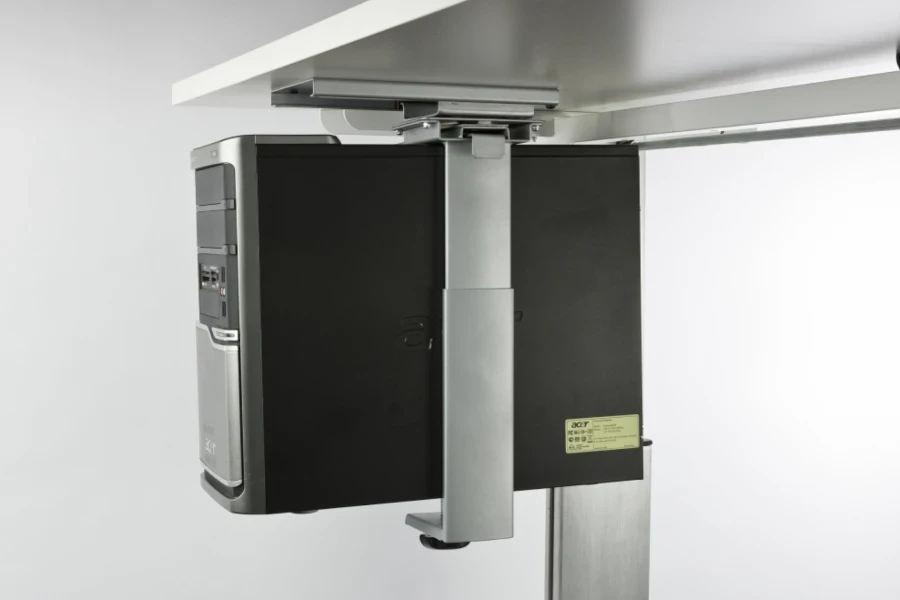
CPU holders are a segment of the computer accessories market. Experts estimated the global computer accessories market value at US $24.60 billion in 2023. They expect it to reach US $43.61 billion by 2028, growing at a 12.13% compound annual growth rate (CAGR).
The increasing use of computers in many companies to handle daily operations is one major factor driving market expansion. In addition, rising dependency and changing consumer lifestyles will also boost market growth.
Regionally, the U.S. accounted for the largest revenue share, generating US $4.5 billion in 2022. China emerged as the second-largest market, with experts forecasting a US $5.4 billion value by 2030 at a 7.3% CAGR.
5 factors worth considering when stocking CPU holders
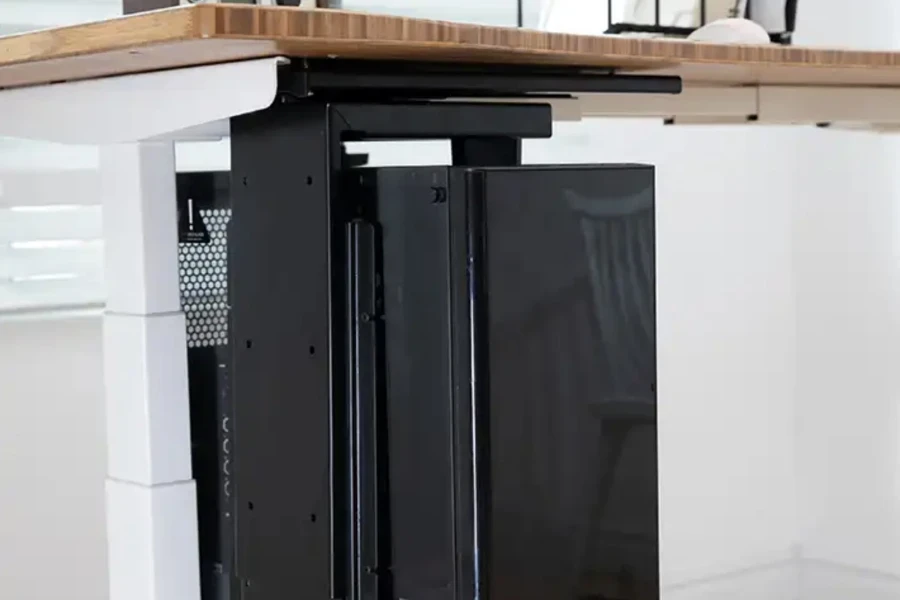
1. Adjustability
Different users have varying preferences when it comes to placing their CPUs. Some may prefer them on the floor, while others may want them elevated for easier access. Hence, businesses must prioritize adjustable CPU holders.
Adjustable CPU holders are like a one-size-fits-all solution. They can easily cater to different preferences, providing a customizable solution to suit their users’ comfort and workflow requirements.
In addition, adjustability is also crucial for ergonomics. Since adjustable features can easily change some aspects, consumers can position their CPUs in the best way possible to avoid straining the body.
Regarding positioning, adjustable CPU holders make CPU access easy, especially for maintenance. Consumers can move their towers up or down or side to side to reach the corners they’d normally find challenging.
2. Size/Compatibility
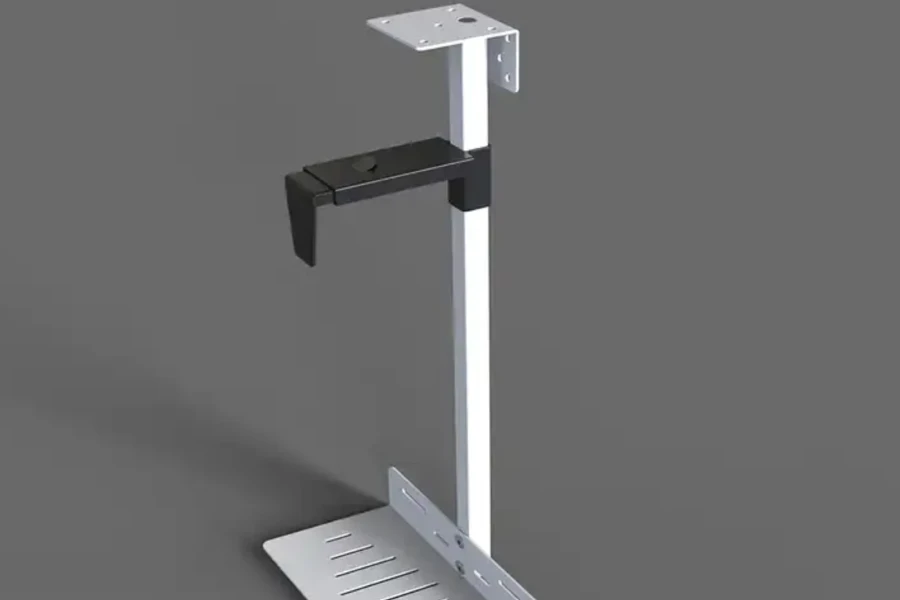
While adjustability is incredibly beneficial, it won’t help if the CPU holder is incompatible with the tower. One of the best ways businesses can ensure compatibility is by checking the dimensions and weight limits.
| CPU holder size (L×W×H mm) | Compatible CPU case types | Weight limit (kg) | Description |
| Small (200 × 300 × 100) | Mini-ITX and some micro-ATX CPUs | 4 to 7 kg | These CPU holders are the go-to for space-saving and compact desks. |
| Medium (300 × 400 × 150) | Micro-ATX and some mid-tower CPUs | 5 to 10 kg | Medium-sized CPU holders offer the perfect balance between size and functionality. |
| Large (400 × 500 × 200) | Mid-tower and some full-tower CPUs | 9 to 18 kg | These CPU holders have enough space for larger CPUs and often come with storage or cable management. |
| Extra-large (500 × 600 × 250) | Full-tower and workstation CPUs | 15 to 22 kg or larger | Manufacturers design these holders for heavy CPUs and multiple components. |
3. Mounting options
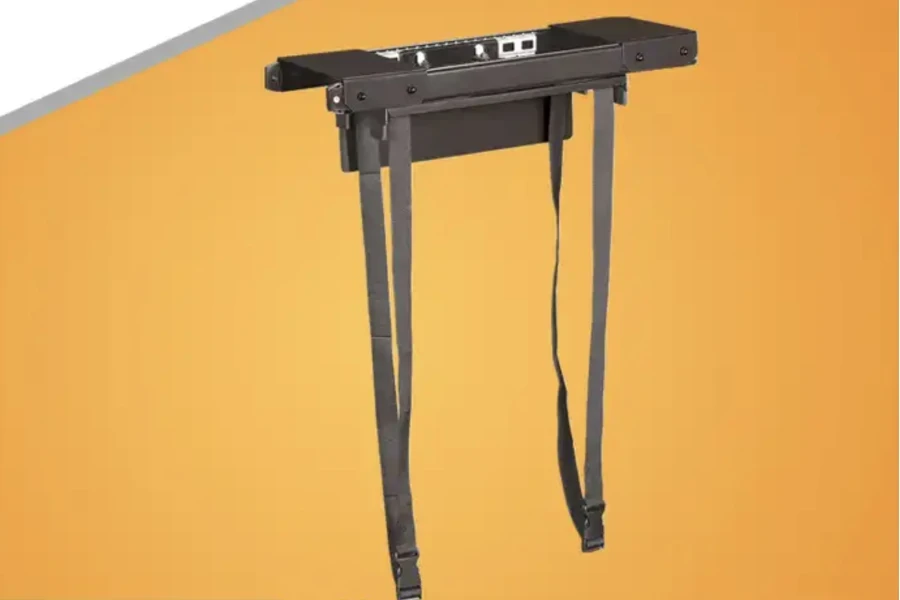
Since consumer preferences vary, manufacturers craft CPU holders with different mounting options. So, before choosing CPU holders, examine if the target consumers will love how they attach to surfaces.
Under-desk mounts are one of the most common mounting options. Such CPU holders come with designs that attach under desks, keeping the computer tower off the floor and freeing up desk space. Also, under-desk mounts often come with adjustable brackets to hold different CPU sizes securely.
What if consumers also want to free up floor space? They can opt for wall-mounted CPU holders. These accessories attach to the wall instead of the desk, making them handy for consumers with limited desk and floor space. Plus, wall-mounted CPU holders are also aesthetically pleasing.
And if consumers still want something different, businesses can offer slide and swivel mounts. These CPU holders come with interesting mechanisms that allow users to pull the CPU out for easy access and maintenance.
Alternatively, sellers can also stock up on floor-mounted CPU holders. This mounting option is more suitable for consumers who prefer their CPUs on the ground or for situations where under-desk and wall mounting are not practical. Plus, floor-mounted CPU holders may also come with wheels for added portability.
4. Material
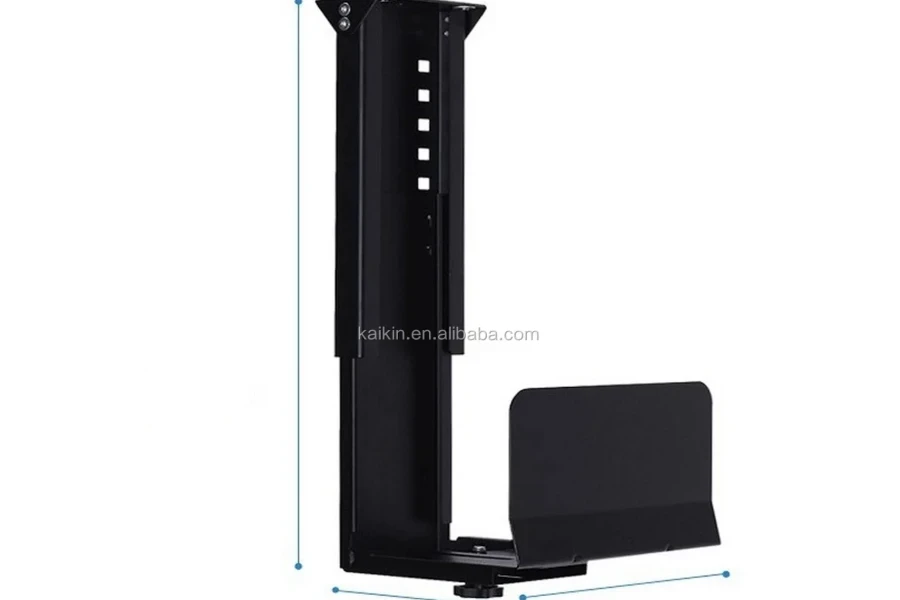
Manufacturers can use various materials to make CPU holders. However, businesses must always opt for quality ones that check the strength and durability boxes. After all, these accessories will be holding delicate machines, so they must be sturdy enough to support that weight.
| Material | Description |
| Steel | Steel is a popular choice for CPU holders due to its strength and durability. Steel CPU holders can support heavy loads and provide sturdy and reliable mounting solutions. |
| Aluminum | Aluminum CPU holders are lightweight yet durable. They’re also naturally corrosion-resistant and offer modern, sleek appearances. |
| Plastic | Some CPU holders use high-grade plastics to create sturdy designs. While not as strong as metal options, plastic CPU holders offer sufficient strength for typical computer tower weights. |
| Stainless steel | Stainless steel offers impressive corrosion resistance and maximum aesthetic appeal. They may be more expensive than other materials, but stainless steel CPU holders are the most durable and can withstand harsh environmental conditions. |
5. Aesthetics
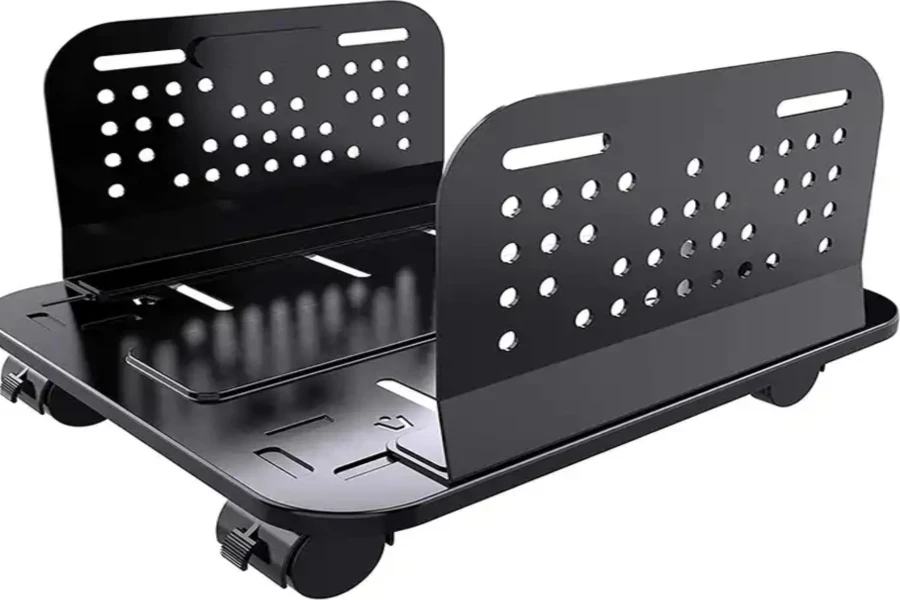
CPU holders shouldn’t have to be dull-looking—consumers can enjoy a little aesthetic flair to complement the overall look and feel of their workspace. One of the first things to consider here is material finishes (like powder coating, anodized finishes, and chrome plating).
Many CPU holders (especially those made from aluminum and steel) feature powder-coated finishes because of their durability and attractiveness. On the other hand, anodized finishes are more sleek and colorful, while chrome plating creates a shiny or reflective finish.
Some other design styles include:
- Sleek and minimalist: CPU holders often come with designs featuring clean lines and simple shapes. This style is more appealing to modern and contemporary workspaces.
- Industrial: Some holders embrace an industrial aesthetic with exposed metal elements, raw finishes, and practical design features.
Rounding up
CPUs can occupy a lot of desk space, and some consumers don’t find it appealing. CPU holders offer an impressive way for consumers to free up their work desks without risking their PC’s safety.
CPU holders come with many features, some even allowing users to roll them around when necessary. While businesses can easily tap into this market, they must consider various factors when choosing them.
This article discusses five of these important considerations, helping to push sellers toward the right CPU holders for their target consumers. Leverage this guide to make more appealing CPU-holder offers in 2024.




